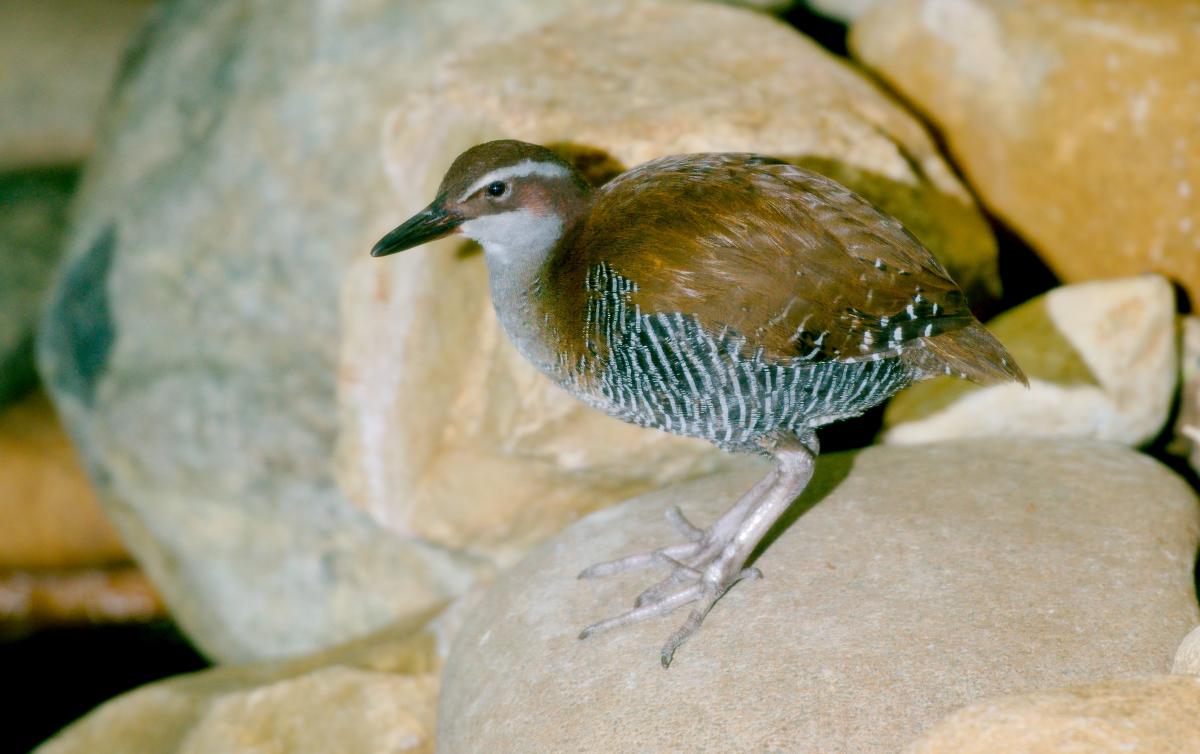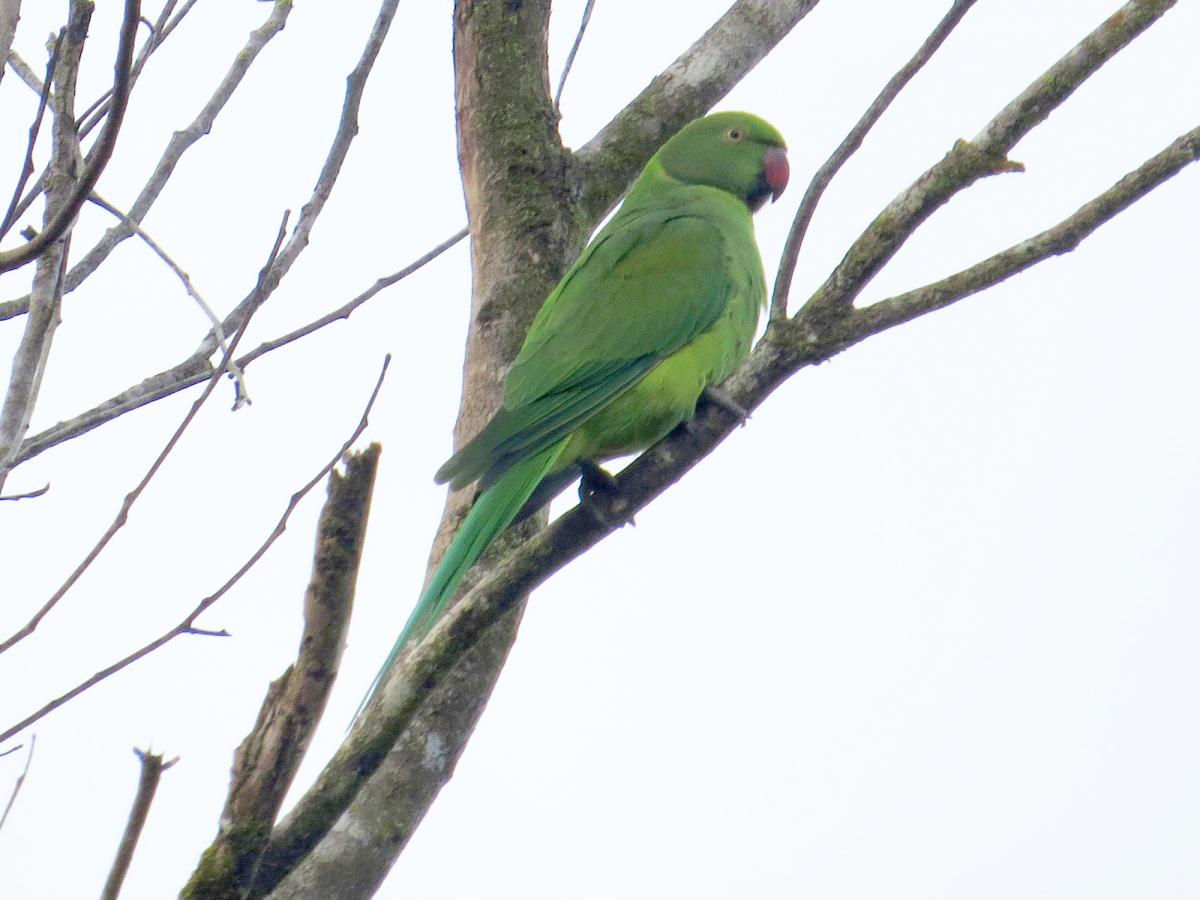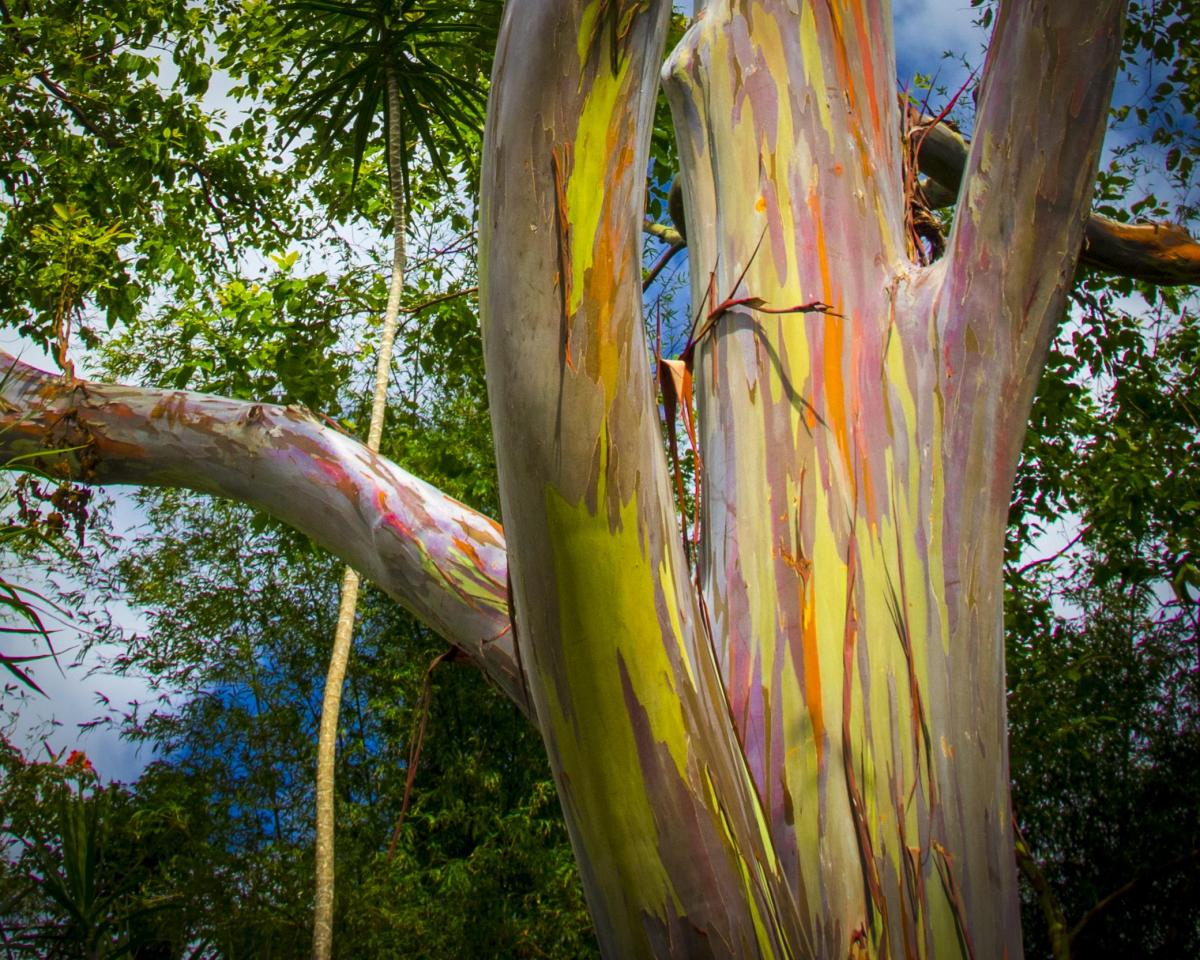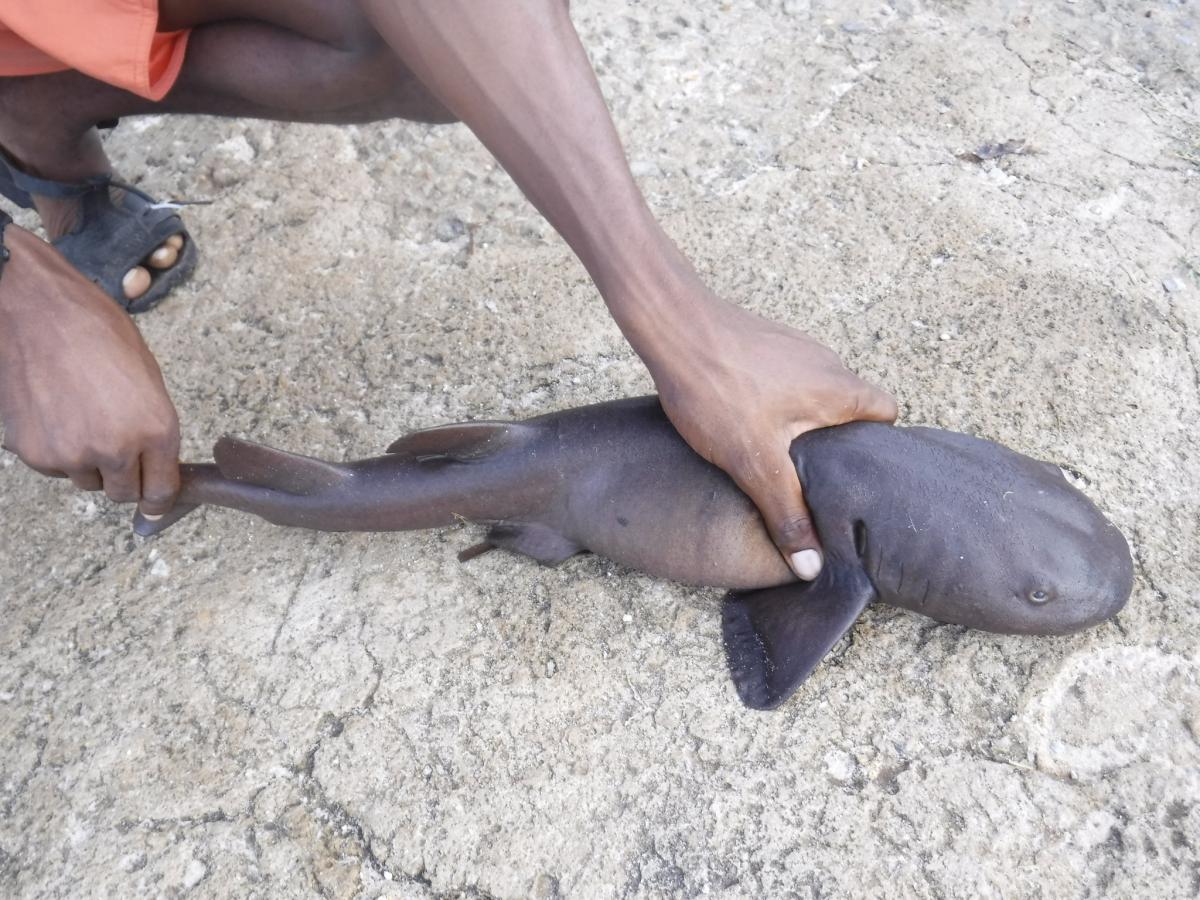Species recoveries bring hope amidst the biodiversity crisis - IUCN Red List
Gland, Switzerland, 10 December 2019 (IUCN) – Conservation efforts have led to improvements in the status of ten species, according to today’s update of The IUCN Red List of Threatened SpeciesTM. This includes the recovery of the Guam Rail, a bird previously listed as Extinct in the Wild.
Despite these improvements, the IUCN Red List now includes 30,178 species threatened with extinction, and there is increasing evidence of the negative effects of climate change. There are now 112,432 species on the IUCN Red List.
“This IUCN Red List update offers a spark of hope in the midst of the biodiversity crisis,” said IUCN Acting Director General, Dr Grethel Aguilar. “Though we have witnessed 73 genuine species declines, the stories behind the 10 genuine improvements prove that nature will recover if given half a chance. Climate change is adding to the multiple threats species face, and we need to act urgently and decisively to curb the crisis.”
“The results of determined conservation actions demonstrate that when governments, conservation organisations and local communities work together, we can reverse the trend of biodiversity loss,” said Jane Smart, Global Director of the IUCN Biodiversity Conservation Group. “This update reveals the ever-increasing impacts of human activities on wildlife. The next year will be critical for the future of the planet, with the IUCN World Conservation Congress in June 2020 a key milestone set to define the conservation agenda needed to address the species emergency ahead of the decisions to be taken by governments at the Biodiversity Convention meeting in Kunming, China, in October 2020.”
Conservation success stories
The latest IUCN Red List update reveals genuine improvements in the status of eight bird species and two freshwater fishes. Captive breeding, combined with careful management of wild populations, has been key to these conservation successes.
Among these improvements is the flightless, fast-running Guam Rail (Hypotaenidia owstoni) – the second bird in history to recover after being declared Extinct in the Wild, after the California Condor (Gymnogyps californianus). Once widespread on the Pacific island of Guam, its numbers declined after the Brown Tree Snake (Boiga irregularis) was accidentally introduced at the end of World War Two. In 1987, the last wild Guam Rail was killed by this invasive predator. Thanks to a 35-year captive breeding programme, the Guam Rail is now established on the neighbouring Cocos Island. However, the bird is still classified as Critically Endangered – one step away from extinction.
In Mauritius, the Echo Parakeet (Psittacula eques) continues its recovery thanks to conservation efforts, including a highly successful captive breeding programme. There are now more than 750 Echo Parakeets in the wild, and with this update the species has been reclassified as Vulnerable, following its improvement from Critically Endangered to Endangered in 2007.
Two freshwater fish species – the Australian Trout Cod (Maccullochella macquariensis) and Pedder Galaxias (Galaxias pedderensis) – have likewise improved, from Endangered to Vulnerable and Critically Endangered to Endangered respectively. Decades of conservation action have focused on establishing additional subpopulations through reintroductions and wild-to-wild translocations. Both species face threats from invasive species and habitat destruction and degradation.
Increasing evidence of the effects of climate change
Climate change has contributed to the declines of species including several freshwater fishes and the reef-dependent Shorttail Nurse Shark. Assessments in this update show climate change affects species by, for example, altering habitats and increasing the strength and frequency of extreme weather events.
This Red List update reveals that 37% of Australia’s freshwater fish species are threatened with extinction, of which at least 58% are directly impacted by climate change. Fish are highly susceptible to extreme droughts caused by declining rainfall and increasing temperatures. Climate change also compounds the threat from invasive alien species, which can move into new areas as water temperature and flow change.
Native to the Western Indian Ocean, the Shorttail Nurse Shark (Pseudoginglymostoma brevicaudatum) has declined by approximately 80% over 30 years. Simultaneously affected by unmanaged fishing and climate change, it has moved from Vulnerable to Critically Endangered. Living only in shallow waters where it has no refuge from fishing, the shark is losing its habitat due to coral reef degradation caused in part by ocean warming.
Climate change is also threatening Dominica’s national bird, the Imperial Parrot (Amazona imperialis). While hurricanes naturally occur in the Caribbean, their increased frequency and intensity result in high bird mortality and habitat destruction, alongside devastating impacts on people. The species declined from Endangered to Critically Endangered after Hurricane Maria in 2017, the strongest hurricane on record to have struck the island. There are now estimated to be fewer than 50 mature individuals left in the wild.
Eucalypts assessed worldwide
All known eucalypt species worldwide have been assessed in this Red List update, revealing that almost 25% are threatened with extinction. Of the 826 eucalypts – comprising the Eucalyptus, Corymbia and Angophora species groups – 812 occur only in Australia. As keystone species, they define the landscape of the entire Australian continent, and are culturally significant to its First Nations People. Eucalypts including the Vulnerable Eucalyptus moluccana are the sole food source for the Koala (Phascolarctos cinereus), which has declined significantly due to loss of eucalypt habitat.
Elsewhere in the world eucalypts can be highly invasive, but in their native range in Australia they face threats from human use of land, especially agriculture and urbanisation. This has resulted in population declines of at least 30% for 134 eucalypts, such as the Endangered Rose Mallee (Eucalyptus rhodantha), which has declined by more than 50%. Mining also threatens some restricted range species, such as the Critically Endangered Eucalyptus purpurata.
Critical habitat for conservation now remains in the areas between rivers and land, on roadside patches and in paddocks where lone trees often remain.
Download photos and summary statistics here.
Supporting quotes:
“With 72% of the species added to the IUCN Red List in this update assessed with support from us, we are pleased to be contributing towards the achievement of the ambitious goal to have 160,000 species on the IUCN Red List by 2020. The IUCN Red List provides essential data that will inform decisions on the Post 2020 global biodiversity framework made next year, guiding progress towards the 2030 Sustainable Development Goals,” said Masako Yamato, General Manager, Environmental Affairs Division of Toyota Motor Corporation.
For more information or interviews please contact:
Harriet Brooker, IUCN Media Relations, +44 7960241862, harriet.brooker@iucn.org
Matthias Fiechter, IUCN Media Relations, +41 795360117, matthias.fiechter@iucn.org
Notes to editors
The IUCN Red List: The IUCN Red List of Threatened Species™ contributes to the achievement of Target 12 of the 2011– 2020 Strategic Plan for Biodiversity. Target 12: By 2020 the extinction of known threatened species has been prevented and their conservation status, particularly of those most in decline, has been improved and sustained.
IUCN–Toyota Partnership: The five-year partnership between IUCN and Toyota Motor Corporation announced in May 2016 has been significantly increasing knowledge on the extinction risk of more than 28,000 species, including many that are key food sources for a significant portion of the global population. This partnership is driven by the Toyota Environmental Challenge 2050, which aims to reduce the negative impacts associated with automobiles to zero, whilst simultaneously making positive impacts on society.
Highlights from the 2019-3 update
Below are additional examples from this update to The IUCN Red List.
Examples of other species that have been added to the Red List
Fan Mussel (Pinna nobilis) – This marine mollusc has entered the Red List as Critically Endangered. A newly discovered pathogen, Haplosporidium pinnae, is causing dramatic declines in the population throughout the Mediterranean Sea where it is endemic. Causing the deaths of 80 to 100% of affected Fan Mussels, this amounts to a mass mortality event.
Giant Pseudoscorpion (Garypus titanius) – The world’s largest pseudoscorpion has entered the Red List as Critically Endangered. Reaching 1.5cm, this giant mini-beast related to scorpions lives on a 5-hectare islet off the UK Overseas Territory of Ascension Island. The Giant Pseudoscorpion is under threat due to invasive predatory invertebrates, such as the American Cockroach (Periplaneta americana). Control and management of these invasive predators is the key to its long-term survival.
Barbie Pagoda (Podoserpula miranda) – This rare and unusual New Caledonia fungus entered the Red List as Critically Endangered. Clearance of its forest habitat and habitat degradation caused by introduced pigs, feral cattle and horses are its main threats.
Examples of other species whose conservation status has declined
European Rabbit (Oryctolagus cuniculus) – While European Rabbits are widespread as a result of historic introductions, the species within its natural range across Spain, Portugal and southern France has moved from Near Threatened to Endangered. An ecosystem engineer and keystone species, it is essential prey to the Endangered Iberian Lynx (Lynx pardinus) and the Vulnerable Spanish Imperial Eagle (Aquila adalberti). A new wave of Rabbit Haemorrhagic Disease has caused estimated population declines of up to 70%.
Tana River Red Colobus (Piliocolobus rufomitratus) – One of the world’s 25 most threatened primates, this Kenyan species is now Critically Endangered because of drastic habitat loss. It is losing its forest habitat to flooding, agriculture, fire, selective logging and unsustainable wood collection. All of its remaining forests are small and have a precarious future. Currently all red colobus species are listed as threatened because of habitat loss and, in most cases, hunting. An action plan for their conservation is currently being prepared by the IUCN SSC Primate Specialist Group.
Madagascan Rousette (Rousettus madagascariensis) – Endemic to Madagascar and nearby islands, this bat moved from Near Threatened to Endangered mainly due to hunting pressure at its roosting caves. It appears to be hunted exclusively for subsistence using home-made traps and wooden batons to knock the bats down from cave ceilings. The species is suspected to have declined by more than 30% over the last 15 years.
Examples of other species that have changed status as a result of new information and methodologies
Bird extinctions – BirdLife International re-examined the likelihood of extinction for some species, resulting in three species being reclassified as Extinct: Cryptic Treehunter (Cichlocolaptes mazarbarnetti), Poo-uli (Melamprosops phaeosoma) and Alagoas Foliage-gleaner (Philydor novaesi); and one as Extinct in the Wild: Spix’s Macaw (Cyanopsitta spixii).
Quotes from Red List Partners
“This update highlights increasing evidence of species in decline due to the various direct and indirect effects of climate change,” says Dr. Beth Polidoro, Associate Director of Biodiversity Assessment and Valuation at Arizona State University’s Center for Biodiversity Outcomes. “These results not only reflect an increased understanding of the impacts of climate change on the world’s biodiversity, but the rigorous work of hundreds of scientists and practitioners around the globe working together to systematically conduct and review Red List assessments.”
“The recovery of the Guam Rail and Echo Parakeet is fantastic proof of how effective targeted conservation action can be. However, it is important to remember that not all species can be brought back from the brink, especially if their natural habitat has been destroyed. The priority should always be conserving habitats to prevent declines and extinctions from happening in the first place,” said Dr Ian Burfield, Global Science Coordinator for species, BirdLife International.
“Earth’s wild species don’t just improve the joy of living on this planet, they make our lives possible,” said Will Turner, Senior Vice President of Global Strategies at Conservation International. “The IUCN Red List has long been humanity’s eyes and ears, alerting us to the loss of nature and its dire consequences. Though they are still too few, the strong examples of species recovering in this year’s Red List release bring a new message: with concerted action, we can do this.”
“The completion of the eucalypt assessment is a major milestone for plant conservation: pinpointing and highlighting the hundreds of threatened species in this iconic and ecologically important genus will increase their chances of survival in the face of the uncertain climate of the future. Global assessments of large genera of plants are challenging collaborative exercises and critically important to improve our understanding of plant extinction risks and the actions needed to mitigate them," said Dr Eve Lucas, Kew Scientist and Myrtaceae expert.
“While these improvements are encouraging, we remain in the midst of a geologic scale extinction event caused by the combined threats of climate change, habitat loss, and other human pressures on species,” said Sean T. O’Brien, President and CEO of Nature Serve. O’Brien continued, “These findings demonstrate that careful fieldwork and modern technology can lead to successes in identifying, tracking, and making informed conservation decisions on behalf of highly endangered species that actually work.”
“The latest results showing a number of important conservation success stories is encouraging, and it is important that we present these as much as we do threats and declines. The public needs to be aware that our efforts do indeed succeed in improving the status of species. They also need to know that only through concerted efforts can we sustain these successes in the face of increasing threats. The emerging threat of climate change is now receiving increasing attention via the Red List assessment process, as seen in the declines of a number of freshwater and marine fish. A particularly sobering situation is the dramatic decline in the population of the Imperial Parrot on Dominica, to less than 50 mature individuals, due to the severity of Hurricane Maria. This is a species I have seen in the wild, and to realize it is now Critically Endangered due to a single extreme event shows how fragile many of the planet’s species are,” said Dr. Thomas E. Lacher, Jr., Texas A&M University.
“During these times of ecological emergency – it is essential that we recognise and celebrate the achievements of hard-working conservationists and communities around the globe. Yet, 10 species in population recovery out of an enormous 30,178 facing extinction, is simply not enough,” said Dr Andrew Terry, Director of Conservation & Policy at ZSL (Zoological Society of London). “Conservation impact is a long-term process, taking years of collaboration and financial investment – and this is currently where recovery programmes are suffering. We need programmes to be integrated with goals like carbon sequestration or wider economic development for us to scale our impact and prevent extinctions of threatened species.” Dr Terry continued, “We also desperately need a major global push on building conservationists’ skills and experience in biodiversity hotspots. Programmes like EDGE of Existence at ZSL help build capacity in countries around the world, empowering people to recover the most Evolutionary Distinct and Globally Endangered species on their doorstep. It is only with long-term, cross-disciplinary, collaborative thinking – that we can bring greater hope to more people and wildlife across the planet.”
The IUCN Red List
Global figures for the 2019-3 IUCN Red List of Threatened Species:
- TOTAL SPECIES ASSESSED = 112,432
- (Total threatened species = 30,178)
- Extinct = 877
- Extinct in the Wild = 73
- Critically Endangered = 6,413
- Endangered = 10,629
- Vulnerable = 13,136
- Near Threatened = 6,826
- Lower Risk/conservation dependent = 192 (this is an old category that is gradually being phased out of The IUCN Red List)
- Least Concern = 57,931
- Data Deficient = 16,355
The figures presented above are only for those species that have been assessed for The IUCN Red List to date. Although not all of the world’s species have been assessed, The IUCN Red List provides a useful snapshot of what is happening to species today and highlights the urgent need for conservation action. Relative percentages for threatened species cannot be provided for many taxonomic groups on The IUCN Red List because they have not been comprehensively assessed. For many of these groups, assessment efforts have focused on threatened species; therefore, the percentage of threatened species for these groups would be heavily biased.
For those groups that have been comprehensively assessed, the percentage of threatened species can be calculated, but the actual number of threatened species is often uncertain because it is not known whether Data Deficient (DD) species are actually threatened or not. Therefore, the percentages presented above provide the best estimate of extinction risk for those groups that have been comprehensively assessed (excluding Extinct species), based on the assumption that Data Deficient species are equally threatened as data sufficient species. In other words, this is a mid-point figure within a range from x% threatened species (if all DD species are not threatened) to y% threatened species (if all DD species are threatened). Available evidence indicates that this is a best estimate.
The IUCN Red List threat categories are as follows, in descending order of threat:
- Extinct or Extinct in the Wild
- Critically Endangered, Endangered and Vulnerable: species threatened with global extinction.
- Near Threatened: species close to the threatened thresholds or that would be threatened without ongoing conservation measures.
- Least Concern: species evaluated with a lower risk of extinction.
- Data Deficient: no assessment because of insufficient data.
- Critically Endangered (Possibly Extinct): this is not a new IUCN Red List Category, but is a flag developed to identify those Critically Endangered species that are in all probability already extinct but for which confirmation is required; for example, through more extensive surveys being carried out and failing to find any individuals







